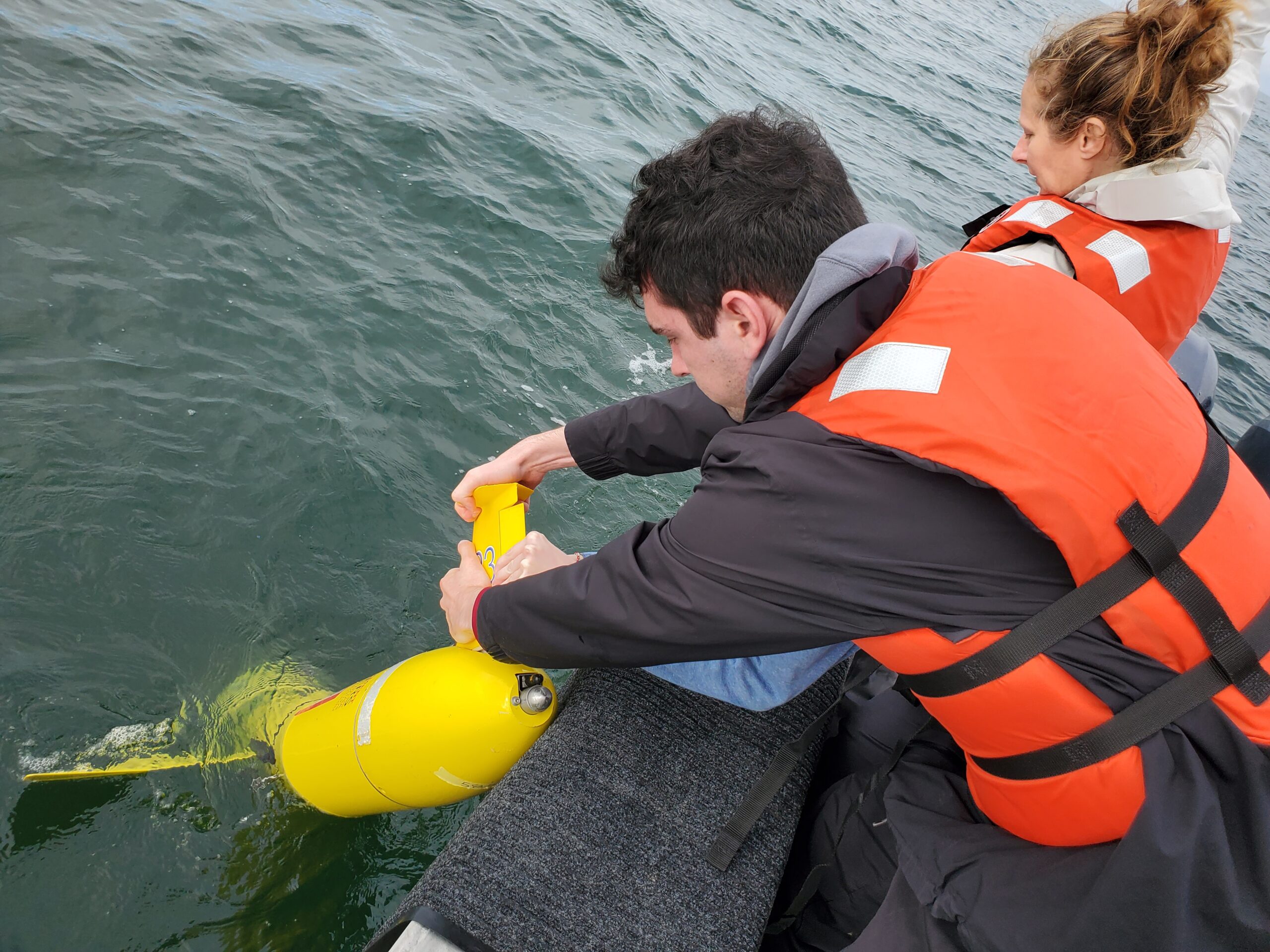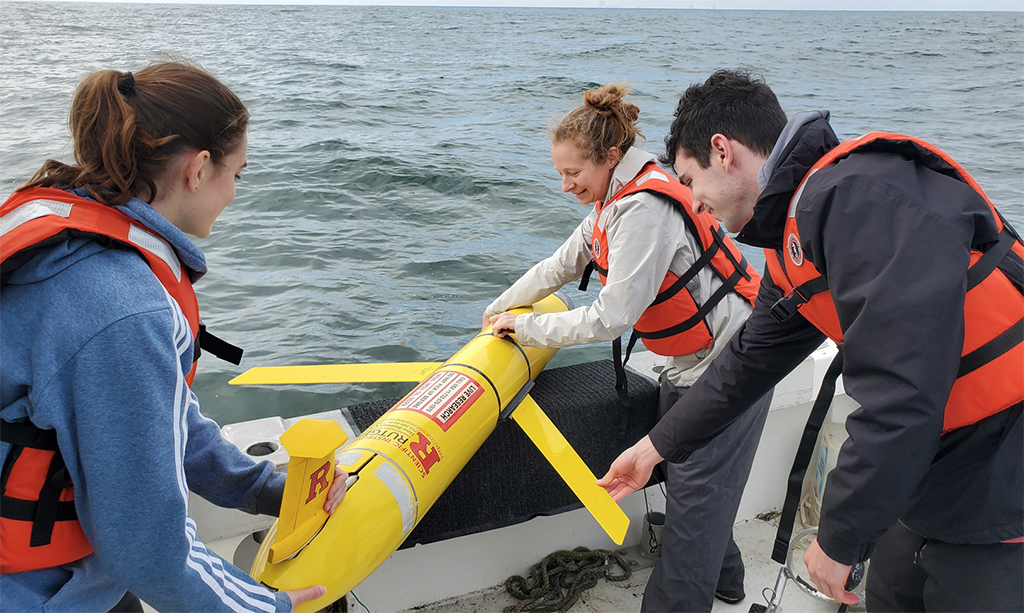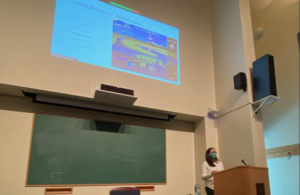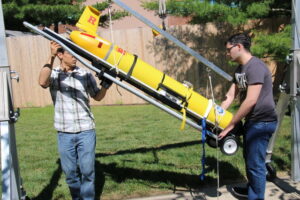New students Leslie Birch, Emily Busch, Bre DiRenzi, Rhyan Grech, Yachen Li, and Jake Zappala worked together to ensure the successful deployment and recovery of RU23. The students prepared and deployed the glider on October 11th. For 3 weeks, the students piloted the glider on their own mission: to transect along the Endurance Line and back, and to learn while doing so. Earlier this week, the students successfully recovered RU23 alongside Captain Chip Haldeman aboard the R/V Resilience.
Glider RU23, once famous for its service during Superstorm Sandy in 2012, had settled into retirement nearly 7 years ago. Seeing a clear learning opportunity, the students worked alongside the RU COOL glider team in restoring and preparing the glider for another mission. The students split in teams, half on the water for deployment and half in the COOL room for piloting. The MOO cohort deployed the glider with bated breath, despite the potential risk of a leak due to the RU23’s age. With guidance from the RU COOL glider team, the students piloted the glider, adjusting the mission trajectory around storms, ship traffic, and ocean currents. RU23 and the students managed to locate the strong signal of the Mid-Atlantic cold pool in an otherwise well-mixed shelf before turning the glider around and heading it back to Tuckerton, NJ.
With the glider now safely home after a successful mission, the students have begun the cleaning and readying of the glider for another round in the winter or spring. The experiential nature of this deployment, from mission conception through deployment, from piloting to recovery, and with data analyses ongoing throughout, is unique to the Rutgers Master’s of Operational Oceanography program. By providing opportunities to learn not just the science but the technologies used to collect that science, and to be part of a real-time ocean observing team, the graduates of the program leave with the skills to be highly competitive in any research or industry career.





